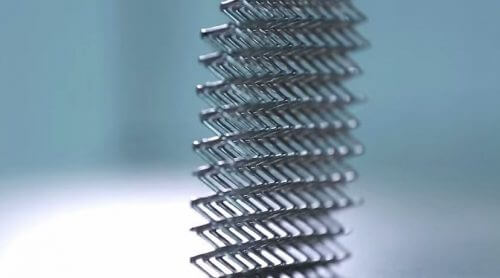A metallic micro-lattice developed by Boeing and HRL Laboratories has recently won a world record for the lightest metal in the world

By: Dafna Haim Langford
A metallic micro-lattice developed by Boeing and HRL Laboratories has recently won a world record for the lightest metal in the world.
In aviation, one of the significant factors in energy consumption and therefore the cost of aviation is the weight of the aircraft. In light of this, many scientists around the world are looking for light but strong materials to replace the heavy metals from which airplanes are built. The Boeing Company, in collaboration with HRL Laboratories, has been developing in recent years a light metallic material that imitates the strong and light human bone structure. The new structure is so light it could be balanced on the tip of a dandelion seed. The material weighs a hundred times less than polystyrene (a strong synthetic material).
In the development process of the light metal, complex production processes were used which can be copied to other metals and materials such as aluminum and to create very light aluminum surfaces with a density less than that of air (without the air trapped inside). The design principle is to significantly reduce the density of the material by creating a network structure similar to the human bone which is built in the form of a tiny and light network that gives strength to the entire structure.
To build the metal microgrid, the scientists used a dedicated polymer template and material fibers about 80 nanometers thick (1,000 times thinner than a human hair). The result is an ultra-thin material, due to the lattice structure with a large surface area and great energy absorption capacity.
The production process is fast and therefore the scientists believe that it will be possible to use the materials produced by this method for the purposes of weight reduction, insulation and heat exchange, and for application in airplane wings, helmets and even in the future in the development of an artificial lung.
מקור

2 תגובות
Wait for the synthetic spider webs in development. will be stronger and lighter than any known material. including carbon fiber.
Throughout the article, the lightweight structure of the new metal structure is emphasized, but what about its strength? Why is such an important figure not mentioned in the article? What is the strength of the structure created relative to other materials that are used today?